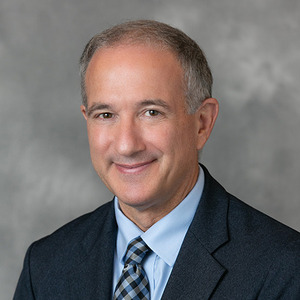Power List

Christopher J. Rapuano
Power List Profile
Chief, Cornea Service, Wills Eye Hospital, Philadelphia, Pennsylvania, USA
What is an interesting or little-known fact about you?
I am a French citizen and visit France fairly often. My mother was born and raised in France, and we still have many relatives there.
Why did you decide to pursue ophthalmology/your subspecialty?
When I went to medical school, my plan was to become a surgeon. I always liked to use my hands and to “fix” things. My first clinical rotation was internal medicine, which I liked a lot more than I thought I would. I’d always liked solving puzzles. The only “surgery” I knew prior to medical school was general surgery, which I expected to love. However, when I rotated through general surgery as a medical student, it just wasn’t for me. I then rotated through the “surgical subs,” as they were called at Columbia medical school, which were orthopedics, ENT, and ophthalmology. In those subspecialties, one could care for both medical and surgical problems. Of those three, I loved the precision and elegance of ophthalmic surgery (not to mention the fact that you could do it sitting down). Additionally, the concept of restoring vision was very compelling.
During my ophthalmology residency, I liked most of the subspecialties, but cornea was my favorite. I appreciated the fact that you could (usually) easily see the pathology. I enjoyed the infectious disease component (one of my favorite parts of internal medicine), the surgery was elegant, and the visual results were often very impressive. It was also the late 1980s and excimer laser refractive and therapeutic surgery was just on the horizon, which I felt had potential to revolutionize ophthalmology. I soon became involved in the VISX excimer laser FDA trials, and this technology has lived up to its expectations. My specialty and subspecialty decisions were made many years ago, but they were great decisions for me.
What’s been the biggest breakthrough in ophthalmology/your specific field over the last 10 years?
The advent of corneal crosslinking for the treatment of keratoconus has dramatically changed how we manage patients with keratoconus. It prevents progression and has decreased the number of transplants we need to perform for this condition.
Is there a particular tool, technological advance, or instrument you would not have been able to live without over the past 10 years?
Though I think we took good care of patients without it, I find anterior segment optical coherence tomography (AS-OCT) to be very helpful in the diagnosis of many conditions, especially when the corneal clarity is compromised. It is also very useful to follow certain corneal and anterior segment conditions to evaluate for progression. The advent of epithelial thickness mapping using AS-OCT in the past several years is also rather helpful in the eye after refractive surgery and also in the diagnosis and management of eyes with keratoconus.
What would you like to see change in ophthalmology/your subspecialty over the next 10 years – and why?
I’d like to see corneal crosslinking be covered by medical insurance – period! Currently, we have to jump through hoops to get this procedure covered by many insurance companies. It’s crazy, as crosslinking decreases the risk of an expensive surgery like a corneal transplant, but the insurance company will pay a lot of money for that!
